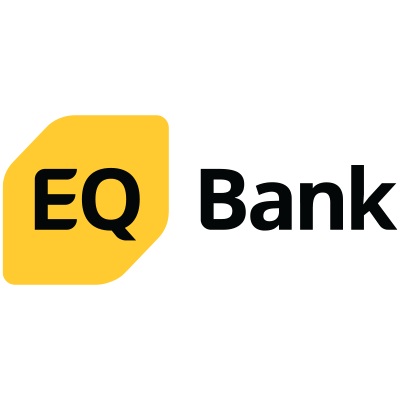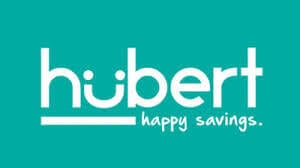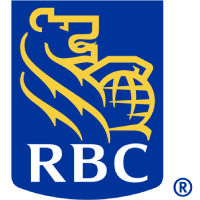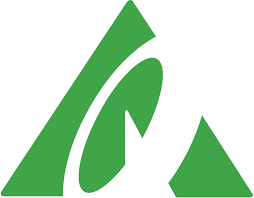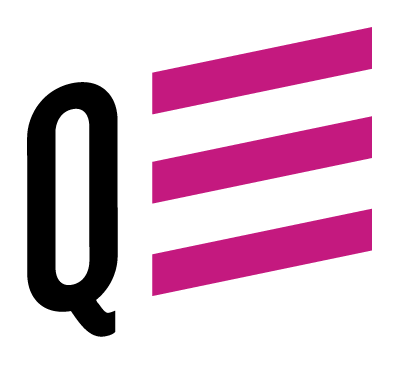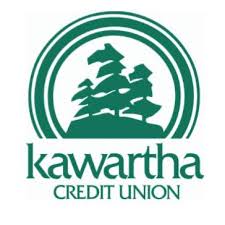
Earn 2.25% when you open a High Interest eSavings account.
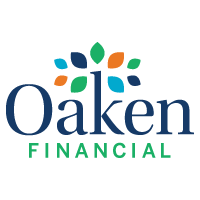
Earn a guaranteed 3.50% in your TFSA when you lock in for 1 year.

Open your TFSA with one of the best online brokers in Canada. See our ranking.
MoneySense is an award-winning magazine, helping Canadians navigate money matters since 1999. Our editorial team of trained journalists works closely with leading personal finance experts in Canada. To help you find the best financial products, we compare the offerings from over 12 major institutions, including banks, credit unions and card issuers. Learn more about our advertising and trusted partners.
Tax-free savings accounts (TFSAs) are more than a simple tax-sheltered savings account. TFSAs allow Canadians to hold cash, guaranteed investment certificates (GICs), stocks, bonds, exchange-traded funds (ETFs) or mutual funds within a structure backed by the government. Any interest made during your investment is yours to keep, tax-free.
There’s a lot that goes into choosing the best TFSA, like your use of other registered accounts such as registered retirement savings plans (RRSP), your life stage, your level of comfort with investing on your own, and your wealth-building strategy.
Keep scrolling for our list of the best TFSA rates and accounts and to learn everything you need to know about TFSAs in Canada.
Best TFSA savings account rates
A TFSA can be used as a high-interest savings account (HISA), earning you interest on the cash you deposit into it. Using a TFSA this way can be suitable for savers who want to sock money away and watch it grow, tax-free, at an interest rate that is higher than a typical savings account. As with other types of TFSAs, there’s an annual contribution limit, set at $7,000 for 2024 anad 2025.
Because the savings rates on these TFSAs may be less than the rate of return on investments, holding only cash in your TFSA can prevent you from maximizing the account’s main benefit: tax-free growth. However, if cash is what you want, pick a TFSA like those listed below, which offer superior interest rates on the money you hold in the account.
EQ Bank TFSA Savings Account
- Interest rate: 1.75%
- Minimum balance: None
- Insurance: CDIC
There are no fees for this account, allowing you to deposit and withdraw as many times as you want for free, and there is no minimum balance to hold. This TFSA, like all of EQ Bank’s accounts, is CDIC-insured, meaning that your funds up to $100,000 are federally protected. Note that with EQ Bank, you can only have one open TFSA at a time and hold a maximum of $200,000 in your account.
Home Trust High Interest Savings Account
- Interest rate: 2.40%
- Minimum balance: $1,000
- Insurance: CDIC
Rates are subject to change without notice.
This high-interest savings account (HISA) from Home Trust is offering 2.40% in interest, including on TFSA plans, and you can get started with a minimum deposit of $1,000. The maximum investment is $10,000,000. Home Trust is a lesser known institution but it was founded in 1977, and you can rest assured that your deposits of up to $100,000 are protected by CDIC coverage.
Hubert Financial TFSA
- Interest rate: 2%
- Minimum balance: None
- Insurance: Unlimited, by the Deposit Guarantee Corporation of Manitoba
Rates are subject to change without notice.
Hubert is an online-only institution that offers a TFSA savings account with no monthly service fee and no minimum balance. When you bank with Hubert, 100% of your deposits (not the $100,000 maximum usually offered by CDIC) are guaranteed by the Deposit Guarantee Corporation of Manitoba. These accounts are available across Canada, including Quebec.
Achieva Financial TFSA Savings Account
- Interest rate: 2.10%
- Minimum balance: None
- Insurance: Unlimited, by the Deposit Guarantee Corporation of Manitoba
Rates are subject to change without notice.
With the Achieva Financial TFSA savings account, you’ll earn interest on your deposits with no fees and no minimum balance. Additionally, you’ll get a $1 per month top-up into your free daily savings account when you sign up for electronic communications. Your deposits are guaranteed by the Deposit Guarantee Corporation of Manitoba, and these accounts are available to all residents of Canada, including Quebec.
Best big bank TFSA savings account rate
In general the rates offered by Canada’s big banks aren’t as competitive as those from online-only institutions but if you already hold money with them, if you want the security that comes with using a large institution, or if you prefer a place that has in-person branches, this might be a good choice for you.
National Bank Cash Advantage Solution
- Interest rate: From 0.65% (for deposits of $9,999 or less) to 2.75% (for deposits of $500,000 and over)
- Minimum balance: $1
- Insurance: CDIC
Rates are subject to change without notice.
You can access National Bank’s TFSA when you select the Cash Advantage Solution (CAS). Designed as a low-commitment way to invest money in registered accounts, the CAS has a low $1 minimum balance, offers from 0.65% to 2.75% interest (depending on your balance), and lets you withdraw or move money at any time.
RBC Registered Savings Deposit
- Interest rate: 0.45%
- Minimum balance: None
- Insurance: CDIC
Rates are subject to change without notice.
Like the account from National Bank above, the RBC Registered Savings Deposit is a flexible way to “park” your savings in a registered account without giving up access to it. This account offers an interest rate of 0.45%, has no minimum balance, and there are no fees to transfer your funds to another RBC account.
Best TFSA GIC rates in Canada
Best TFSA GIC rates (1-year term)
Despite its name, you can hold different kinds of investments in TFSA–not just savings. Guaranteed investment certificates (GICs) are deposits that you make for a specified time and interest rate, and at the end of that period, you get back your principal and interest, guaranteed. GICs often have better interest rates than savings accounts or other secure products.
EQ Bank TFSA GIC
- Interest rate: 3.50%
- Term: 1 year
- Insurance: CDIC
Rates are subject to change without notice.
If you already bank with EQ you’re used to seeing their consistently high interest rates. The TFSA GIC rate on a one-year deposit continues this trend. Plus, it’s easy to open online (you’ll need to set up a no-fee Personal Account first). Start with as little as $100 and rest assured deposits of up to $100,000 are protected by the CDIC.
Oaken Financial TFSA GIC
- Interest rate: 3.50%
- Term: 1 year
- Insurance: CDIC
Rates are subject to change without notice.
Oaken Financial is quickly becoming known for competitive interest rates, and its offering of 3.50% on a one-year GIC suggests it’s continuing the trend. There’s a minimum deposit of $1,000. Oaken GICs are protected by CDIC deposit insurance up to $100,000.
Best TFSA investment accounts
While you can cash money into a savings vehicle (like a savings account or GIC) within a TFSA, you can really unlock greater returns when holding hold investments like stocks or bonds through either a robo advisor or online brokerage.
MoneySense is an award-winning magazine, helping Canadians navigate money matters since 1999. Our editorial team of trained journalists works closely with leading personal finance experts in Canada. To help you find the best financial products, we compare the offerings from over 12 major institutions, including banks, credit unions and card issuers. Learn more about our advertising and trusted partners.
If you’ve watched television in the last two years, you have surely seen ads for robo-advisors from places like the RBC and BMO. Unlike self-directed brokerage accounts, these platforms automatically invest money on behalf of the account holder, who doesn’t have to worry about buying and selling individual stocks and ETFs.
Robo-advisors are a good way to invest in a TFSA, because they allow you to take advantage of tax-free gains on a variety of investments while not having to pay significant management fees like with a traditional advisor.
Questwealth Portfolios
When you sign up for Questrade, you’ll complete a short questionnaire that measures your risk tolerance and investing interests, such as whether you want socially responsible investments (SRIs). For example, the most conservative portfolio has 80% allocated to fixed-income and cash investments. Your principal is not protected as it would be within a GIC or a savings account, but it’s automatically rebalanced to retain diversification with market changes. Other portfolios can be more aggressive with higher risk, but also come with the possibility of higher returns. Once you choose your portfolio, Questwealth does the rest.
Robo-advisors charge much less for management fees than traditional brokerages, and Questwealth is one of the most affordable at 0.25% (on balances of $1,000 to $99,999) to 0.20% (for a balance of $100,000 or more). This means you keep more of the market gains in your pocket. As with any investment, if your stocks fall, so will your balance.
Wealthsimple Invest
Like other robo-advisors, Wealthsimple offers a streamlined and automatic way to invest without a lot of investing experience. But it stands out for its super-sleek and easy-to-use interface. Wealthsimple Invest uses Nobel Prize-winning research to power its low-fee portfolios and passive investing principles. Both rebalance and dividend reinvestment are automated and with the round-up feature, you can invest spare change left over from your everyday spending. Wealthsimple portfolios cover three broad risk levels—conservative, balance and growth—and they offer socially responsible and halal investing options. (Read for more on halal investing.) Wealthsimple Invest’s management fees start at 0.5% for deposits of $100,000 or less, and go down to 0.4% on deposits of more than $100,000.
MoneySense is an award-winning magazine, helping Canadians navigate money matters since 1999. Our editorial team of trained journalists works closely with leading personal finance experts in Canada. To help you find the best financial products, we compare the offerings from over 12 major institutions, including banks, credit unions and card issuers. Learn more about our advertising and trusted partners.
Opening a TFSA with an online broker allows you to take greater control over your decisions and tailor your portfolio just how you’d like it. Instead of being beholden to how your bank or broker decides to invest your money, a self-directed TFSA allows you to save on fees and manage your investments as you see fit. As with other types of TFSAs, those opened through online brokers are subject to an annual contribution limit, and investments grow tax-free.
Questrade
If you’re comfortable trading individual stocks and ETFs on your own, Questrade (not affiliated with the robo-advisor Questwealth) is a low-fee online brokerage that can empower you to do just that. Questrade accounts can be opened for a minimum of $1,000. There are no fees for purchasing ETFs and buying/selling stocks has a very low commission at just $0.01 per share (or a minimum of $4.95 up to a max of $9.95). This compares very favourably to the flat $9.95 per trade many other online brokerages will bill you. Questrade charges no annual or quarterly admin fees and no low-activity fees.
Wealthsimple Trade
Weathsimple Trade is the online brokerage of Wealthsimple, and it allows you to trade individual ETFs and stocks on your own in a TFSA. Its biggest selling point is that there are no commissions on trades. It’s a game changing feature—you won’t owe trading fees when buying or selling shares. However, unlike some other brokerages, such as Questrade, you will have to pay a foreign exchange fee when trading American equities. Plus, Wealthsimple Trade doesn’t let you trade mutual funds and lacks any analytics features. If you want to take investing into your own hands, Wealthsimple Trade is an easy and affordable option, but know that it is a mobile-only platform. (See our full review of Wealthsimple’s financial products.)
Qtrade
Qtrade has been recognized for its outstanding customer service, investing tools and analytics. But it also stands out because it lets you purchase mutual funds for free. Neither Questrade nor Wealthsimple Trade offer this complimentary service. However, the commission on ETF and stock trades is slightly pricier at $8.75 per trade for most investors, and there is a $25 quarterly administrative fee. Although both can be waived depending on your age and investment activity. While ETF trading is a growing and popular type of asset, if you’re first and foremost interested in mutual funds, Qtrade is the way to go.
Watch: What is a TFSA
What is a tax-free savings account (TFSA)?
A TFSA is a savings or investment account that’s registered with the government. If you’re a Canadian over the age of 18, you’re eligible to save or invest in a TFSA up to a certain amount annually ($6,000 in 2022 and $6,500 in 2023), and unused contribution room can be rolled over into future years. A TFSA is a tax shelter; it gives every Canadian of the age of majority in their province or territory some savings or investment room that can grow tax-free.
Some confusion arises from the fact that, despite the name, not every TFSA is a traditional savings account. While you can put cash money into a high-interest savings account or other savings vehicle within a TFSA, it can also hold investments like stocks or bonds, mutual funds, GICs or ETFs. In this way, a TFSA is similar to an RRSP, with the exception that with the TFSA you do not pay tax on the earnings when you make a withdrawal. On the other hand, where you can claim RRSP contributions as deductible on your income tax return, that perk isn’t applicable to TFSA contributions.
TFSAs are flexible. So, you can use them to save for retirement (handy if you’ve used all your available RRSP contribution room), but also for a car, a wedding, a vacation or another savings goal all entirely. Purchase the TFSA product of your choice when you register for the account, and let it earn and grow. When you’ve accumulated the amount you want, you’re free to withdraw it, without penalty and without paying tax.
Let’s break this down:
For retirees, or others whose benefits may be clawed back if their income exceeds a certain level, there’s an additional bonus: Money withdrawn from a TFSA does not count as income, so it will not negatively affect Canada Pension Plan (CPP) payments or other income-tied benefits.
Good to know about TFSAs
If you overcontribute to your TFSA, you’ll have to pay a penalty of 1% per month on the amount that exceeds your contribution limit. If you find yourself in this situation, Certified Financial Planner Jason Heath recommends making a withdrawal as soon as possible. You can report the mistake to the Canada Revenue Agency and calculate your penalty by filing a RC243 TFSA return form. For more information, read Heath’s column about TFSA overcontributions.
What is my TFSA limit?
The TFSA contribution limit is the maximum amount you’re able to contribute to your TFSAs without penalty.
The TFSA contribution limit for 2024 is $7,000, which is the same as it was in 2024. If you have never deposited money into a TFSA before, and you turned 18 before the year 2009, your lifetime contribution limit is $102,000, as of January 1, 2025. Find your available TFSA room using our contribution room calculator.
TFSA contribution room calculator
Find out how much you can contribute to your TFSA today using our calculator.
When did the TFSA program start in Canada?
The TFSA was introduced by Canadian Minister of Finance Jim Flaherty in 2008, as part of the 2009 federal budget. The program went into effect on January 1, 2009, when individuals 18 years of age or older, with a valid social insurance number, could begin making contributions. The program’s original intent was to help Canadians save for a new car, renovate a house, start a small business or take a family vacation. But since the launch, it has grown into a way to save for a wide variety of reasons, including longer-term financial goals, like retirement. As of 2021, an estimated 15 million Canadians had a TFSA.
TFSA vs. RRSP: Which should you choose?
The main difference between a TFSA and an RRSP is how they are taxed. When you withdraw money from a TFSA, you are not taxed. With RRSPs, the money is taxed on withdrawal.
With this in mind, you might be wondering why anyone would choose an RRSP. The answer lies, again, in the tax structure. When you put money into a TFSA, you do not receive a tax credit. But you do with an RRSP, and when you use it correctly, this credit can be a powerful tool. If, for example, you earn enough money to just break into a higher tax bracket, you could contribute to an RRSP and get an exemption that would bring you back into a lower bracket. Very likely, you’ll be in a lower tax bracket when you need to withdraw those RRSP funds in retirement, resulting in a lower lifetime tax bill.
As with all things investing, it’s usually a good idea to diversify. Both TFSAs and RRSPs have their uses as investment products.
Can you have more than one TFSA?
Yes, you can have more than one TFSA. But it’s important to note that in the government’s eyes, it’s like one account, in that your TFSA contribution room doesn’t change. The TFSA limit is the limit. That said, it can be a good idea to diversify your TFSA, like you would with your other investments. You can use one TFSA like a savings account and keep the money accessible and liquid as “cash.” And, you can use another TFSA for investments, like GICs, stocks, ETFs or other types of investments. One caveat, though: Avoid withdrawing money from one TFSA to deposit to another. Instead, let the institution transfer the funds for you, so you don’t accidentally make a deposit that could count toward reducing your contribution room.
How to open a TFSA
Opening a TFSA is a simple process that can usually be done online. Choose the kind of account you want to open, such as a saving account, a GIC or an investment account, and the institution where you want to hold your money. Locate their page to open the account and follow the directions on the screen.
Note that if you don’t already bank with the institution, you will need to enter all of your information such as your legal name, address, date of birth and social insurance number. This information is used to register your TFSA.
Sometimes, you will need to set up a basic account with the same institution so you have a way to transfer funds in and out of the account. For example, if you choose a TFSA GIC, you may need an interim account from which you can transfer money in, and to hold the money and interest at the end of the term.
You can go into a branch if you invest with an institution that has brick-and-mortar locations, or use telephone or online chat for assistance with online-only banks.
Best savings accounts in Canada
Find the best and most up-to-date savings rates in Canada using our comparison tool
Read more about TFSAs:
- TFSA vs. RRSP: How to decide between the two
- When not to contribute to a TFSA
- What is considered day trading in a TFSA
What does the * mean?
Affiliate (monetized) links can sometimes result in a payment to MoneySense (owned by Ratehub Inc.), which helps our website stay free to our users. If a link has an asterisk (*) or is labelled as “Featured,” it is an affiliate link. If a link is labelled as “Sponsored,” it is a paid placement, which may or may not have an affiliate link. Our editorial content will never be influenced by these links. We are committed to looking at all available products in the market. Where a product ranks in our article, and whether or not it’s included in the first place, is never driven by compensation. For more details, read our MoneySense Monetization policy.
